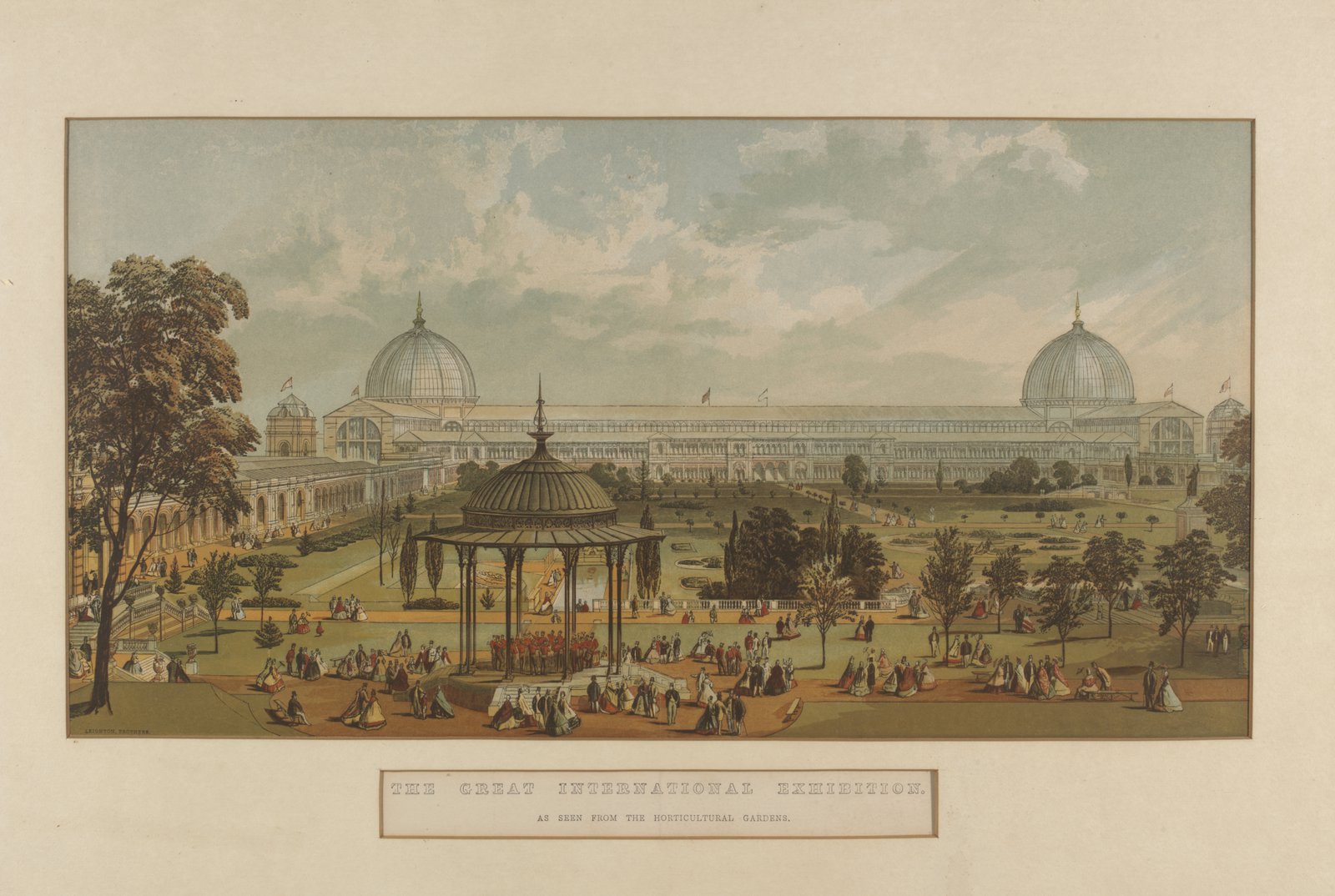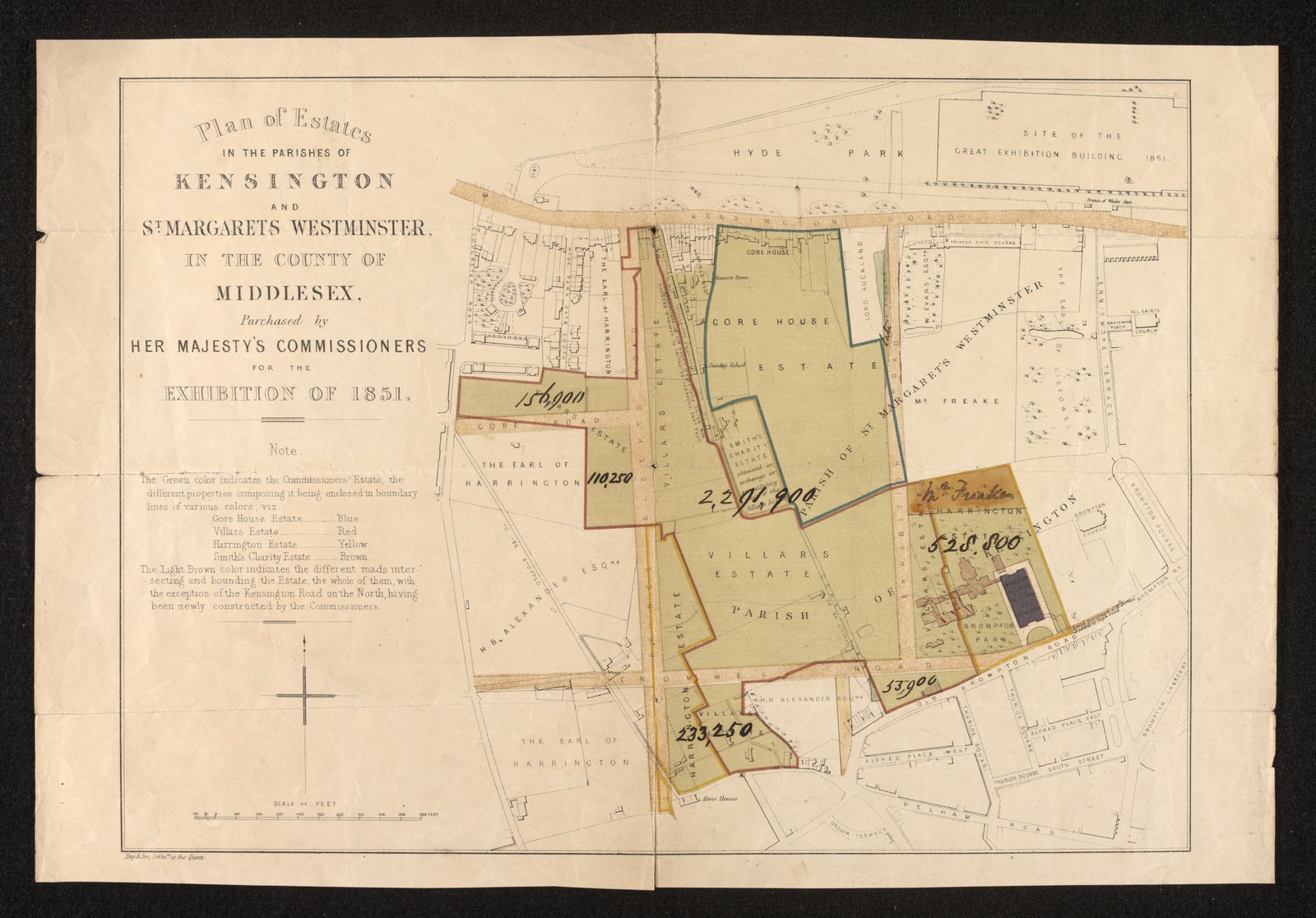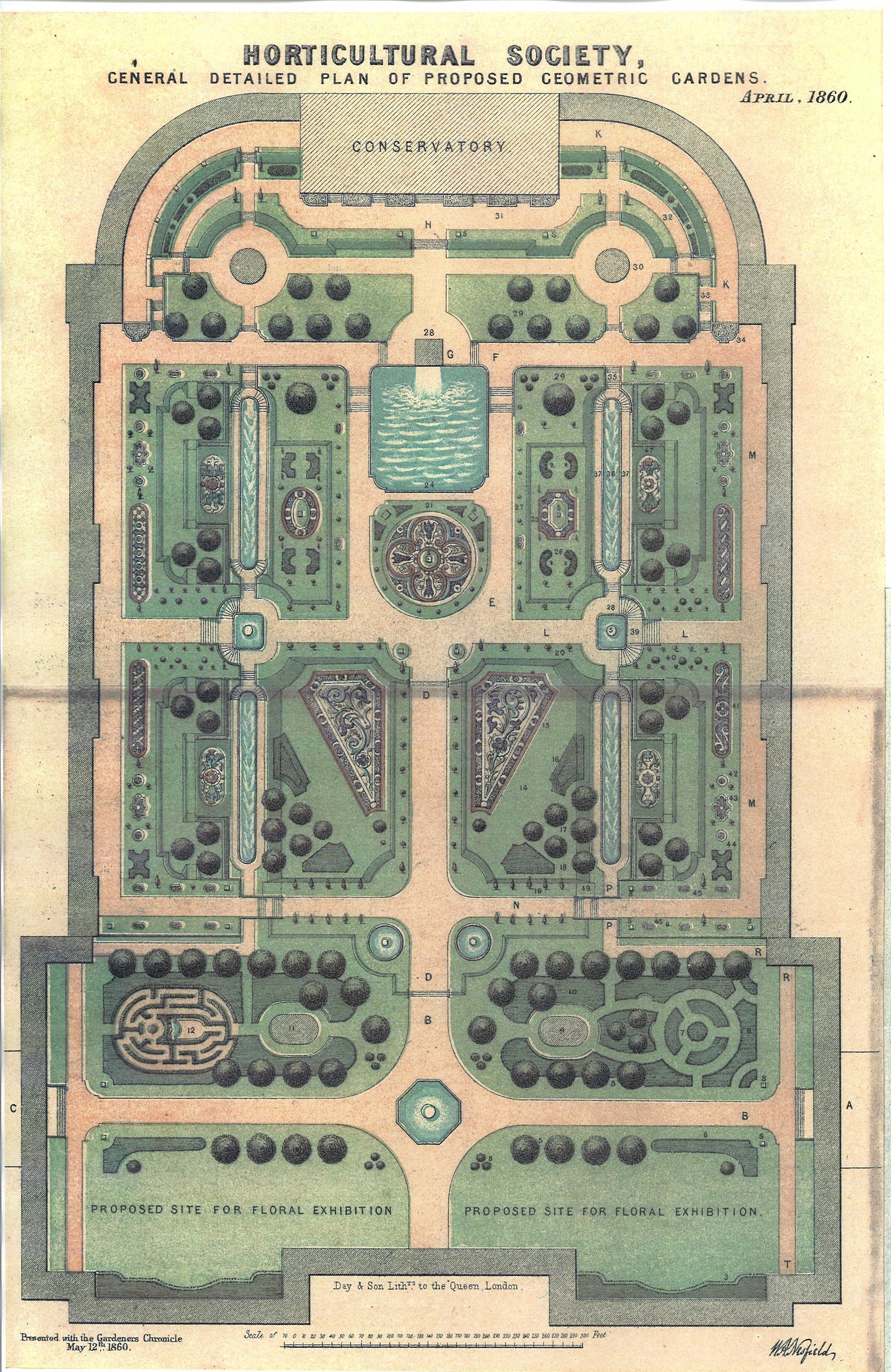
The Royal Commission for the Exhibition of 1851 was established in 1850 with Prince Albert as its President, to organise the Great Exhibition - celebrating and encouraging manufacturing and design. The Exhibition of the Works of Industry of all Nations brought exhibits from manufacturers, designers, scientists, engineers and artisans around the world to the “Crystal Palace”, the iconic iron and glass building, the largest structure on Earth at the time, erected in Hyde Park. The Exhibition opened on 1st May 1851 and was a huge success.
In August 1851, as the Great Exhibition was in full swing in the Crystal Palace, it was becoming obvious to Prince Albert and the Royal Commission for the Exhibition of 1851 that the Exhibition was going to make a large profit (£186,000 in the end). At Prince Albert’s suggestion, the Commissioners decided to use this to purchase 87 acres of land across the road from the Exhibition building with the intention of developing an estate where they could promote science and art to the benefit of productive industry. At the time this site, now known as South Kensington, was an area of orchards, nurseries and market gardens supplying the West End of London with fresh produce. There had been some limited residential development in the 1840s, but, despite this, it was still sufficiently rural as to be viewed by many as being an inconvenient location.
The Commissioners asked various people to design the layout of the estate for them, and all the resultant designs had gardens and landscaping at their heart. Because of monetary concerns, none of these designs were implemented and development was much more piecemeal but the idea of having a green space at the centre of the estate pervaded. A building was erected on the area now occupied by the Natural History Museum, to house another international exhibition in 1862. Behind this, the 1851 Royal Commission made land available for the Royal Horticultural Society to develop an extensive garden with the Commission carrying out landscaping and constructing exhibition galleries around the site. This central garden with its watercourses, flower beds and adjoining conservatory was to continue to dominate the estate until the 1880s.
In line with Prince Albert’s original concept, the Commission’s estate has developed into a science and art quarter of world renown and, although the Royal Horticultural Society garden has long since disappeared from the area, there are still many green spaces on and around the estate.
Today, The Royal Commission for the Exhibition of 1851 is delighted to support the South Kensington Green Trail in creating pop-up nature hubs encouraging biodiversity and wild pollinators, architecture inspired by insects, plants with healing properties and imaginative ideas for upcycling materials.

The International Exhibition of 1862 as seen from the horticultural gardens

Plan of the Estate purchased by the Royal Commission for the Exhibition of 1851 in 1852-1853

Design for the Royal Horticultural Society Garden by W.A. Nesfield 1860
All images from the Archives of the Royal Commission for the Exhibition of 1851